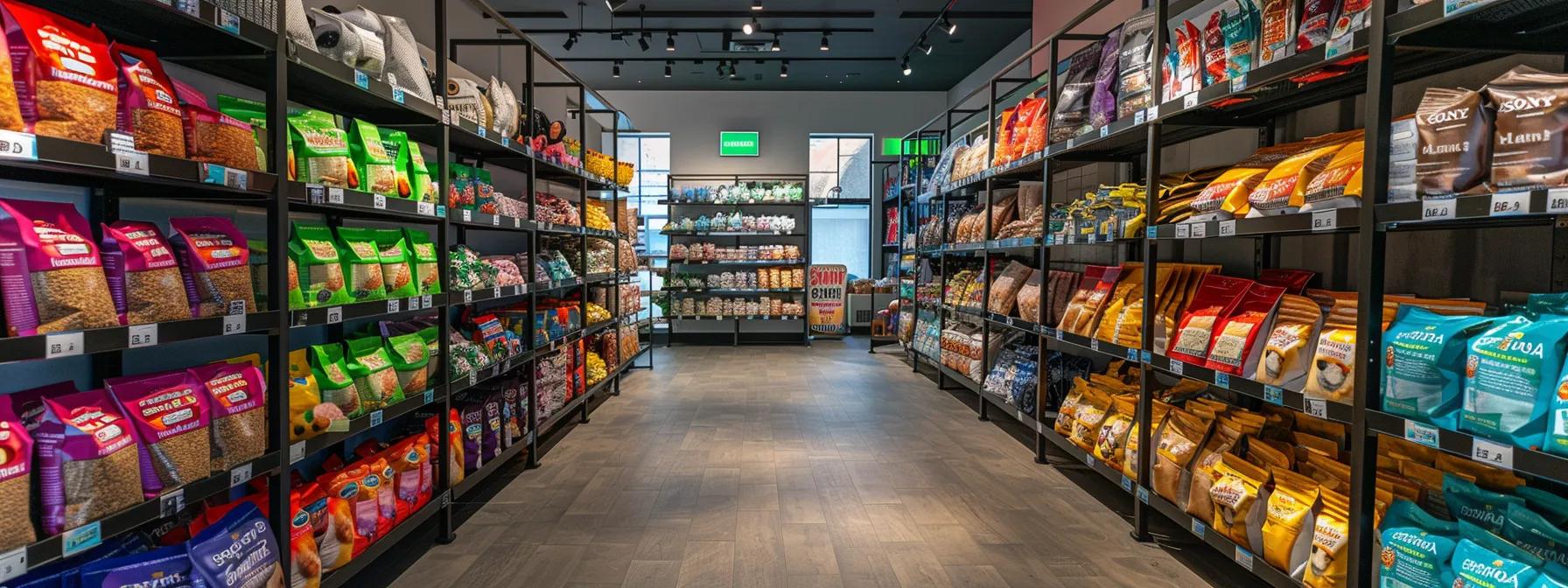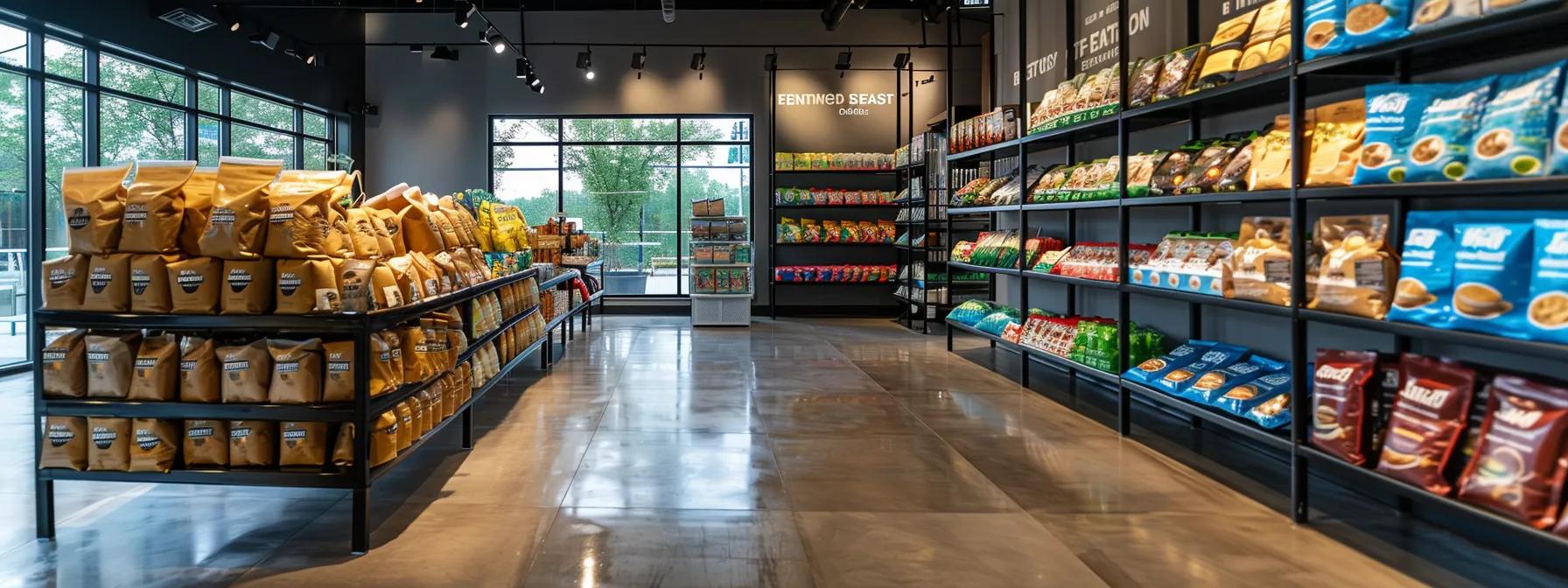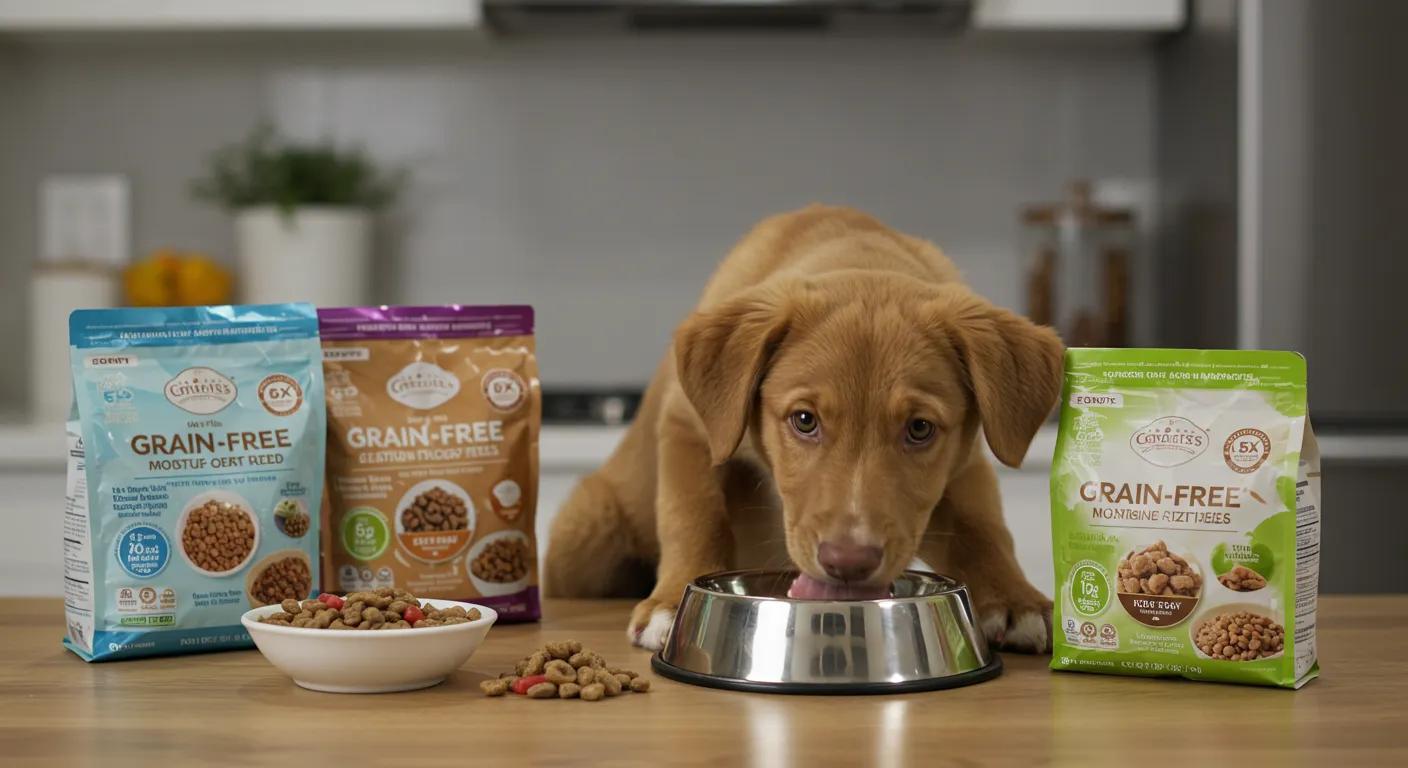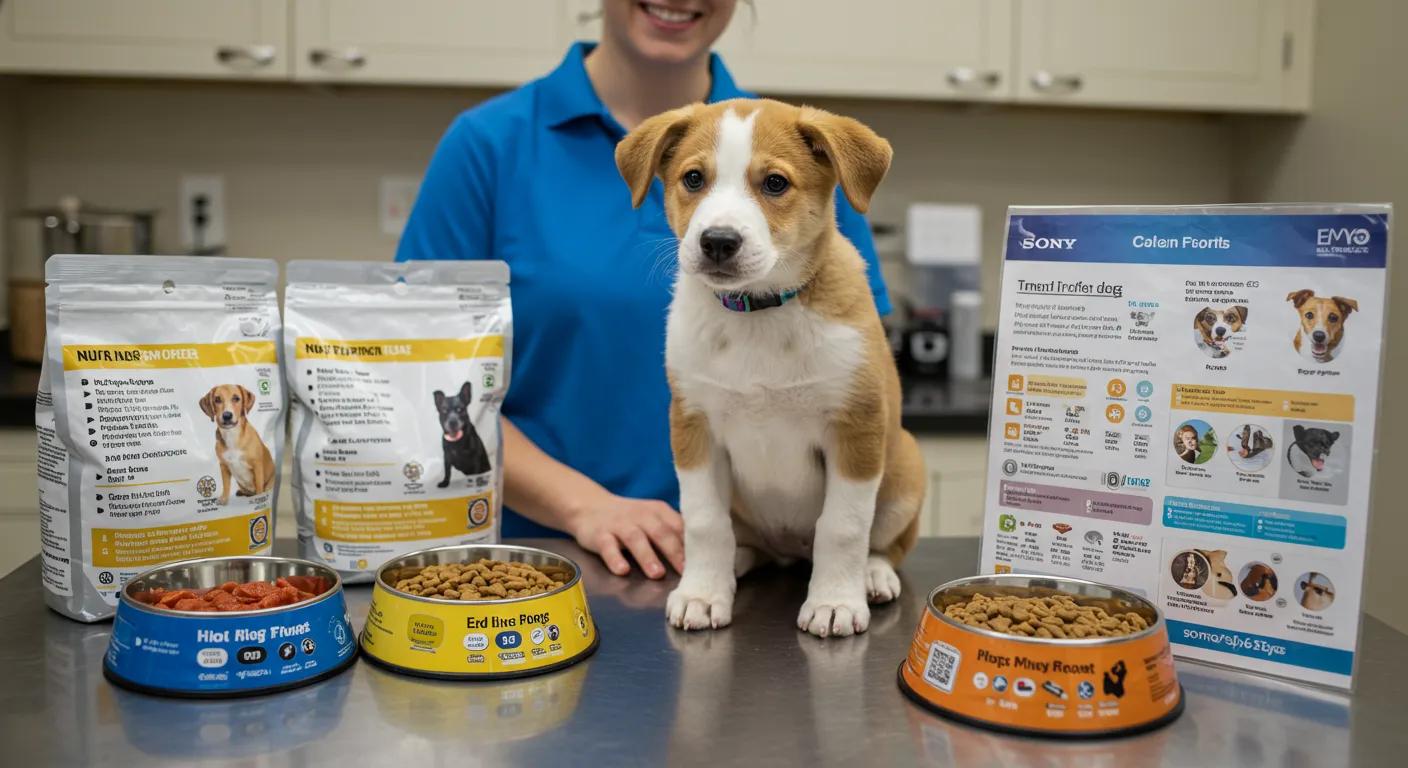
Grain-Free Puppy Food: Top Recommendations You Need
Introduction
Grain-free puppy food has become an essential dietary consideration for modern pet owners who want to ensure optimal nutrition and health for their growing puppies. As concerns about food sensitivities, allergies, and digestive issues rise, many pet parents are seeking alternatives that eliminate grains while still providing vital proteins, healthy fats, and essential vitamins. This article explores the top grain-free puppy food brands in 2024, their ingredient profiles, benefits for growth and development, and detailed feeding guidelines—all backed by scientific research and expert veterinary nutritionists.
Puppies, like human children, have unique nutritional needs that change rapidly as they mature. They require a well-formulated diet to support energy levels, muscle growth, immune function, and cognitive development. Grain-free diets may reduce the risk of gastrointestinal issues associated with common grains like wheat or barley, using alternatives such as sweet potatoes and peas to enhance nutrient absorption while minimizing inflammation.
In this article, pet owners will learn about high-quality grain-free brands, the specific ingredients that optimize puppy health, and essential feeding practices. Detailed comparison tables, lists, and instructions are provided to help every pet parent make an informed decision that enhances digestion, boosts immunity, and fosters overall wellbeing during critical developmental stages.
The content is segmented into the following key themes: the best grain-free puppy food brands available in 2024, which ingredients to look for, the key benefits of a grain-free diet, how to choose the right product, feeding guidelines for optimal nutrition, common questions, and how expert reviews can aid in decision-making.
Transitioning now into the first main topic, we examine the leading grain-free puppy food brands formulated with quality ingredients and innovative nutritional practices.
What Are the Top Grain-Free Puppy Food Brands in 2024?

Determining the top grain-free puppy food brands in 2024 requires evaluating product formulations, ingredient quality, nutritional balance, and manufacturing practices. Industry leaders emphasize high-quality protein sources, optimal fat-to-carbohydrate ratios, and the absence of grains that may trigger allergies or digestive issues. Brands that focus on scientific research and incorporate the latest pet nutrition trends consistently rank high among pet owners and veterinary experts.
One brand that has repeatedly earned accolades is Pawsitive Eats. Renowned for its commitment to natural ingredients, Pawsitive Eats Grain-Free Puppy Food is crafted with premium proteins—often sourced from free-range poultry or lean meats—and supplemented with nutrient-dense vegetables. Their recipes avoid common allergens by using alternatives like sweet potatoes and peas for carbohydrates. Other notable competitors include Orijen Puppy and Blue Buffalo Wilderness, which also emphasize high protein and low carbohydrate profiles while strictly eliminating grains.
A closer look reveals key factors that determine these rankings. First, including high-quality protein sources such as chicken meal and whitefish supplies the building blocks for muscle growth. Second, using alternative carbohydrates like pumpkin seed and lentils sustains energy levels without adverse effects. Third, additional fortifications like essential fatty acids, chondroitin sulfate for joint health, and vitamins supporting cognitive function are now standard in premium formulas. Each brand adheres to nutritional guidelines that meet or exceed AAFCO standards.
Below is a comparison table summarizing prominent brands, highlighting their key features and nutritional advantages:
| Brand Name | Protein Source | Carbohydrate Alternative | Key Nutrients | Notable Feature |
|---|---|---|---|---|
| Pawsitive Eats | Free-range poultry | Sweet potatoes, peas | Omega fatty acids, vitamins A, E, B6 | Innovative freeze-dried options |
| Orijen Puppy | Free-run chicken, fish | Sweet potato, tapioca | High protein, low carb, balanced fats | Biologically appropriate diet |
| Blue Buffalo Wilderness | Deboned chicken, fish | Peas, lentils | Glucosamine, chondroitin, antioxidants | Grain-free wilderness recipe |
| Wellness CORE Puppy | Turkey, chicken | Sweet potato, broccoli | DHA, EPA, antioxidants, probiotics | Added probiotics for digestion |
| Merrick Grain-Free | Deboned beef, chicken | Sweet potatoes, peas | Glucosamine, omega-3s, antioxidants | Slow-cooked for nutrient retention |
The table simplifies decision-making by outlining clear nutritional benefits, ingredient sources, and extra value through proprietary formulations. The inclusion of essential vitamins, minerals, and healthy fats supports muscle and bone development while contributing to cognitive growth.
Customer reviews and veterinary endorsements further reinforce improvements in coat quality, digestive health, and energy levels. As products evolve with new technologies and advancements, staying informed ensures that each puppy receives the highest standard of care.
In summary, the top grain-free puppy food brands in 2024 are distinguished by their commitment to natural, high-quality ingredients, balanced nutrition, and transparent production practices. These qualities lead to improved health outcomes—from better digestion to stronger immunity—and support lifelong wellness.
What Ingredients Should You Look for in Grain-Free Puppy Food?
When selecting grain-free puppy food, it is critical to focus on ingredient composition to ensure the diet not only excludes grains but also provides balanced nutrition for rapid growth and optimal health. Ingredients should be chosen based on digestibility, nutrient density, and their ability to promote immune function, cognitive development, and overall vitality.
Key components to prioritize include high-quality protein sources, healthy animal fats, and natural carbohydrate alternatives. For protein, ingredients such as deboned chicken, turkey, whitefish, or venison supply essential amino acids needed for growth and repair. Animal fats, such as chicken fat or fish oil, provide concentrated energy as well as essential fatty acids like omega-3 and omega-6 required for brain and eye development.
Instead of conventional grains, nutrient-rich alternatives such as sweet potatoes, peas, lentils, and pumpkin seeds offer sustained energy and fiber to aid digestion. Key micronutrients, including vitamins A, D, and E for immune modulation, bone development, and skin health, along with minerals like calcium, phosphorus, zinc sulfate, and iron, are vital. For example, calcium iodate significantly contributes to bone strength, while zinc helps maintain a healthy coat.
Some advanced formulas include additional beneficial ingredients such as probiotics (e.g., Lactobacillus acidophilus) to enhance gut flora and improve digestion, and chondroitin sulfate to support joint health. These components collectively form a well-rounded nutritional profile that modern grain-free puppy foods aim to achieve.
Below is a detailed list of essential ingredients: - High-Quality Proteins: Deboned chicken, turkey, whitefish, or venison. - Healthy Fats: Animal fats like chicken fat or fish oil. - Alternative Carbohydrates: Sweet potatoes, peas, or lentils. - Micronutrients: Vitamins A, D, E, B-complex, and minerals such as calcium iodate, zinc sulfate, and phosphorus. - Probiotics: Lactobacillus acidophilus for optimal gut health.
The following table highlights key components and their benefits:
| Ingredient | Primary Function | Benefit to Puppies | Scientific Evidence |
|---|---|---|---|
| Deboned Chicken | High-quality protein source | Supports muscle growth and repair | AAFCO guidelines recognize deboned meats as optimal |
| Sweet Potatoes | Natural carbohydrate alternative | Provides slow-release energy and fiber | Studies show improved digestion with non-grain carbs |
| Chicken Fat | Concentrated energy and fatty acids | Promotes a healthy coat and skin | Rich in omega fats known to enhance skin condition |
| Peas and Lentils | Complex carbohydrates and fiber | Aid in digestion and blood sugar regulation | Evidence suggests legumes improve nutrient absorption |
| Omega-3 Rich Fish Oil | Essential fatty acids (DHA, EPA) | Enhances cognitive development and vision | Clinical trials confirm improved brain health |
| Calcium Iodate | Mineral for strong bone development | Improves skeletal strength | Recommended by veterinary nutrition experts |
| Lactobacillus Acidophilus | Probiotic for gut health | Enhances digestive function | Proven to reduce gastrointestinal disturbances |
Veterinary nutritionists stress that quality labels with whole-food sources, minimal processing, and absence of artificial additives are key indicators of a superior formula. Overall, the ideal grain-free puppy food incorporates a synergistic blend of these ingredients to meet the dynamic nutritional needs of growing puppies, giving pet owners confidence in their pet’s diet.
What Are the Key Benefits of Feeding Grain-Free Puppy Food?

Feeding grain-free puppy food offers several benefits that target the unique developmental needs of growing puppies. The primary advantages include improved digestion, reduced food allergies, enhanced coat and skin quality, and increased energy levels and vitality.
First, enhanced digestion and nutrient absorption is a major benefit. Grain-free formulas that rely on alternative carbohydrate sources, such as sweet potatoes or lentils, tend to be easier to digest than traditional grains. Improved digestion ensures maximum nutrient uptake, leading to optimal growth, stronger immune responses, and better overall health. Puppies on grain-free diets often exhibit more regular bowel movements, indicative of a healthier gastrointestinal tract.
Another significant benefit is a reduced risk of food sensitivities and allergies. Many puppies have intolerances to grains such as wheat, barley, or corn, which can cause itching, digestive upset, or inflammation. Eliminating these grains helps minimize allergic flare-ups. Some studies suggest that grain-free diets lower the incidence of skin conditions and gastrointestinal disturbances by reducing exposure to potential allergens.
A healthy coat and skin also reflect good nutrition. Essential fatty acids found in quality animal fats and fish oil promote a glossy coat and reduce skin irritation. The nutrient-dense formulation supports keratin and collagen deposition, resulting in a shiny, resilient coat with fewer dermatological issues.
In addition, grain-free diets offer a steady energy supply without the rapid spikes associated with grain-based carbohydrates. A consistent energy release benefits not only physical activity but also cognitive development, supporting better learning and focus.
Below is a summary table of these key benefits:
| Benefit | Description | Impact on Puppy Health | Supporting Evidence |
|---|---|---|---|
| Improved Digestion | Alternative carbs aid nutrient absorption | Better bowel regularity and nutrient uptake | Veterinary studies on digestion |
| Reduced Allergy Risk | Eliminates common grain allergens | Fewer skin and gastrointestinal issues | Clinical observations |
| Enhanced Coat and Skin Quality | Rich in essential fatty acids | Shiny coat and reduced skin irritation | Nutritional research |
| Steady Energy Levels | Stable nutrient profile without rapid spikes | Consistent energy for play and learning | Studies on carbohydrate metabolism |
| Enhanced Cognitive Function | Improved nutrient absorption supports brain development | Better focus and learning capabilities | Research on nutrient impact |
In summary, feeding grain-free puppy food promotes robust digestion, minimizes allergy risks, enhances skin and coat health, provides steady energy, and supports both cognitive and physical development, contributing to a healthier, happier puppy.
How Do You Choose the Right Grain-Free Puppy Food for Your Puppy?
Choosing the right grain-free puppy food requires careful evaluation of breed-specific nutritional needs, age and life stage considerations, individual health conditions, and thorough review of the food label for quality and safety. Since each puppy is unique, their dietary needs can vary significantly based on breed, size, and health challenges. Pet owners must combine nutritional science with practical feeding guidelines to make informed decisions.
Breed specificity is important; for example, large-breed puppies may need formulas with joint-supporting ingredients like chondroitin sulfate and glucosamine, while smaller breeds might need calorie-dense nutrients. Consulting a veterinarian or pet nutrition specialist can provide insights specific to your puppy’s breed.
Age and life stage also guide the choice. Puppies in early development require diets high in protein and essential nutrients for rapid growth and brain development. Many brands offer separate formulations for puppies versus adult dogs, so selecting the right one is crucial.
Underlying health conditions must also be considered. Puppies with digestive issues or skin allergies may benefit from grain-free options that emphasize easily digestible ingredients and avoid common allergens. Always review labels for detailed ingredient percentages and sourcing.
To simplify the decision process, review comparison tables and customer feedback. The table below outlines key factors to consider:
| Factor | Key Consideration | Questions to Ask | Impact on Nutritional Choice |
|---|---|---|---|
| Breed-Specific Needs | Large vs. small breed formulations | Does this formula include joint support? | Influences nutrient balance and ingredients |
| Age and Life Stage | Puppy, adolescent, or adult diets | Is this food designed for your puppy's age? | Ensures appropriate calorie and nutrient levels |
| Health Conditions | Allergies or digestive issues | Are common allergens eliminated? | Improves overall health by avoiding irritants |
| Ingredient Transparency | Clear labels and sourcing details | Does the label list ingredient percentages? | Builds trust and ensures high-quality nutrition |
| Expert and Customer Reviews | Feedback from veterinarians and owners | What is the reported digestibility and palatability? | Provides real-world performance insights |
| Price and Value | Cost efficiency relative to nutrient content | Is the cost justified by the quality? | Affects long-term affordability |
In summary, choosing the right grain-free puppy food involves a comprehensive assessment of breed-specific needs, life stage factors, health conditions, and ingredient quality. Detailed labels, expert recommendations, and customer reviews are critical in supporting a well-informed dietary decision. For additional guidance, consulting veterinary nutritionists can be immensely beneficial.
What Are the Best Feeding Guidelines for Grain-Free Puppy Food?

Feeding guidelines for grain-free puppy food ensure that puppies receive the right amount of nutrients at appropriate times to support growth and overall health. Proper feeding practices prevent issues like obesity and digestive disturbances while ensuring a balanced nutrient intake that promotes development.
First, determine the correct portion size using feeding charts provided on the packaging, which usually consider the puppy’s weight, age, and activity level. Adjust these guidelines based on your puppy’s metabolism and energy requirements.
Feeding frequency is critical; most puppies benefit from three to four small meals per day rather than one or two large meals. This routine helps maintain stable blood sugar levels, supports continuous growth, and aids digestion by preventing bloating.
When transitioning to a new grain-free food, introduce it gradually over 7–10 days by mixing it in increasing ratios with the current diet. This slow change minimizes gastrointestinal upset.
Below is a detailed list summarizing the best feeding guidelines:
- Determine the Correct Portion Size – Use packaging charts based on weight and age; adjust for activity level.
- Maintain Regular Feeding Frequency – Feed three to four small meals daily.
- Gradual Transition Process – Mix new food with the old over 7–10 days.
- Monitor the Puppy’s Body Condition – Regularly assess weight and adjust portions.
- Establish Consistent Feeding Times – Create a predictable schedule to aid digestion and behavior.
- Provide Clean, Fresh Water – Ensure constant access to water for digestion and nutrient absorption.
- Consult with a Veterinarian – Regular check-ups help adjust the diet if weight or behavior changes.
In addition, periodically reassess feeding routines as your puppy grows. The sample table below outlines a feeding schedule for a mid-sized puppy:
| Age (Months) | Meals per Day | Approximate Portion per Meal | Notes |
|---|---|---|---|
| 2 – 3 | 4 | 1/4 cup per meal | Frequent small meals; gradual transition |
| 4 – 6 | 3 | 1/3 to 1/2 cup per meal | Monitor growth and adjust as needed |
| 7 – 9 | 2 – 3 | 1/2 cup per meal | Begin reducing meal frequency |
| 10 – 12 | 2 | 2/3 cup per meal | Transition slowly to adult feeding regimen |
Following these feeding guidelines helps optimize nutrient absorption, ensures energy stability, and supports overall development throughout your puppy’s growth phases.
What Are Common Questions About Grain-Free Puppy Food?
Common questions about grain-free puppy food center on safety, nutritional adequacy, and comparisons with traditional diets.
- Is Grain-Free Puppy Food Safe for All Puppies? Yes, if formulated to meet AAFCO standards, though individual needs may vary.
- How Does Grain-Free Compare to Traditional Grained Puppy Food? Grain-free diets reduce allergens and digestive issues while offering alternative nutrients.
- Can Grain-Free Diets Improve a Puppy’s Coat and Skin? Yes, due to the inclusion of omega-rich fats and high-quality proteins.
- Are Grain-Free Puppy Foods More Expensive? Typically, but improved health outcomes and fewer vet visits can justify the cost.
- Do All Puppies Benefit from Grain-Free Food? Most do, especially those sensitive to grains; however, some may tolerate grains without issues.
- What Should I Look for on the Label? Look for whole-food protein sources, alternative carbohydrates like sweet potatoes, and a clear list of vitamins and minerals.
- How Soon Can I See Benefits from a Grain-Free Diet? Improvements in digestion and coat condition can usually be observed within a few weeks of consistent feeding.
These FAQs reflect key concerns that pet owners consider when selecting the best grain-free option. The benefits of grain-free diets are supported by both anecdotal evidence and emerging scientific research.
How Can Expert Advice and Reviews Help You Choose Grain-Free Puppy Food?

Expert advice and customer reviews are valuable resources when navigating the market for grain-free puppy food. Veterinary nutritionists, animal behaviorists, and experienced breeders provide insights that help decode product labels, evaluate ingredient quality, and determine long-term benefits.
Veterinary nutritionists emphasize transparent ingredient lists and balance, often reviewing products for adherence to AAFCO guidelines. Their insights help distinguish between high-quality sources, such as poultry meal from free-range sources versus lower-grade alternatives.
Customer reviews offer real-world evidence of product performance, highlighting strengths and occasional weaknesses such as palatability issues. Detailed reviews and comparison tables further reveal nutritional content and cost-effectiveness, guiding pet owners to products that deliver measurable improvements.
Below is a table summarizing how expert advice and reviews contribute to decision-making:
| Resource | Key Contribution | Benefit to the Pet Owner | Example Insight |
|---|---|---|---|
| Veterinary Nutritionists | Evaluate ingredients and AAFCO adherence | Ensure complete and balanced nutrition | Detailed analysis of protein quality |
| Customer Reviews | Real-world performance metrics | Provide practical evidence of efficacy | Reports on improved coat shine and digestion |
| Expert-Led Comparison Tables | Side-by-side nutritional and cost comparisons | Simplify decision-making process | Breakdown of ingredient sources and prices |
| Ingredient Deep Dives | In-depth explanations of each ingredient’s role | Uncover hidden additives or fillers | Discussion on the benefits of omega-3 fatty acids |
In addition, many manufacturers provide product review sections on their websites and verified testimonials on retail platforms. These collective insights simplify the process of choosing high-quality grain-free puppy food, giving pet owners confidence in both the nutritional adequacy and the practical benefits of their selected product.
Frequently Asked Questions
Q: What makes grain-free puppy food a better option than traditional grain-based food? A: Grain-free puppy food eliminates common allergens and digestive irritants found in grains like wheat and barley. This can improve digestion, reduce allergic reactions, and result in a healthier coat. Additionally, grain-free formulas emphasize high-quality proteins and alternative carbohydrates for balanced nutrition.
Q: How long does it typically take for a puppy to adapt to a grain-free diet? A: Transitioning should be gradual over 7–10 days. Most puppies show noticeable improvements in digestion and energy within a few weeks, although the adaptation period may vary based on individual metabolism and sensitivities.
Q: Can I use grain-free food for all breeds and sizes of puppies? A: Yes, quality grain-free formulations are designed to meet the nutritional needs of various breeds and sizes. However, it is best to consult with your veterinarian for tailored advice, especially for large breeds or puppies with specific health issues.
Q: Are there any risks associated with feeding a grain-free diet? A: For most puppies, a well-formulated grain-free diet is safe and beneficial when it meets AAFCO standards. Some concerns about links to heart conditions in adult dogs exist, but for growing puppies, ensuring complete nutrition is key.
Q: How do I know if my puppy is benefiting from a grain-free diet? A: Look for improvements in digestive health (more regular bowel movements), a shinier coat, increased energy levels, and better weight management. Regular veterinary check-ups can help monitor progress.
Q: Where can I buy high-quality grain-free puppy food? A: Look for reputable specialty pet stores, veterinary clinics, and trusted online retailers. Expert reviews and veterinarian recommendations can help identify trusted brands like Pawsitive Eats, Orijen, and Blue Buffalo Wilderness.
Q: Should I rotate different brands of grain-free puppy food? A: Rotating between several high-quality brands can provide nutritional variety and help prevent food sensitivities. Any changes should be made gradually and under veterinarian guidance.
Final Thoughts
Grain-free puppy food represents a significant advancement in pet nutrition, offering tailored dietary solutions that address allergies, digestive issues, and growth needs. By focusing on high-quality proteins, alternative carbohydrates, and detailed ingredient transparency, these brands provide formulations that exceed the nutritional demands of growing puppies. Clear feeding guidelines, expert reviews, and transparent labels empower pet owners to make the best choices. In an ever-evolving pet nutrition landscape, staying informed and consulting with professionals is key to ensuring a long, healthy, and active life for every puppy.






